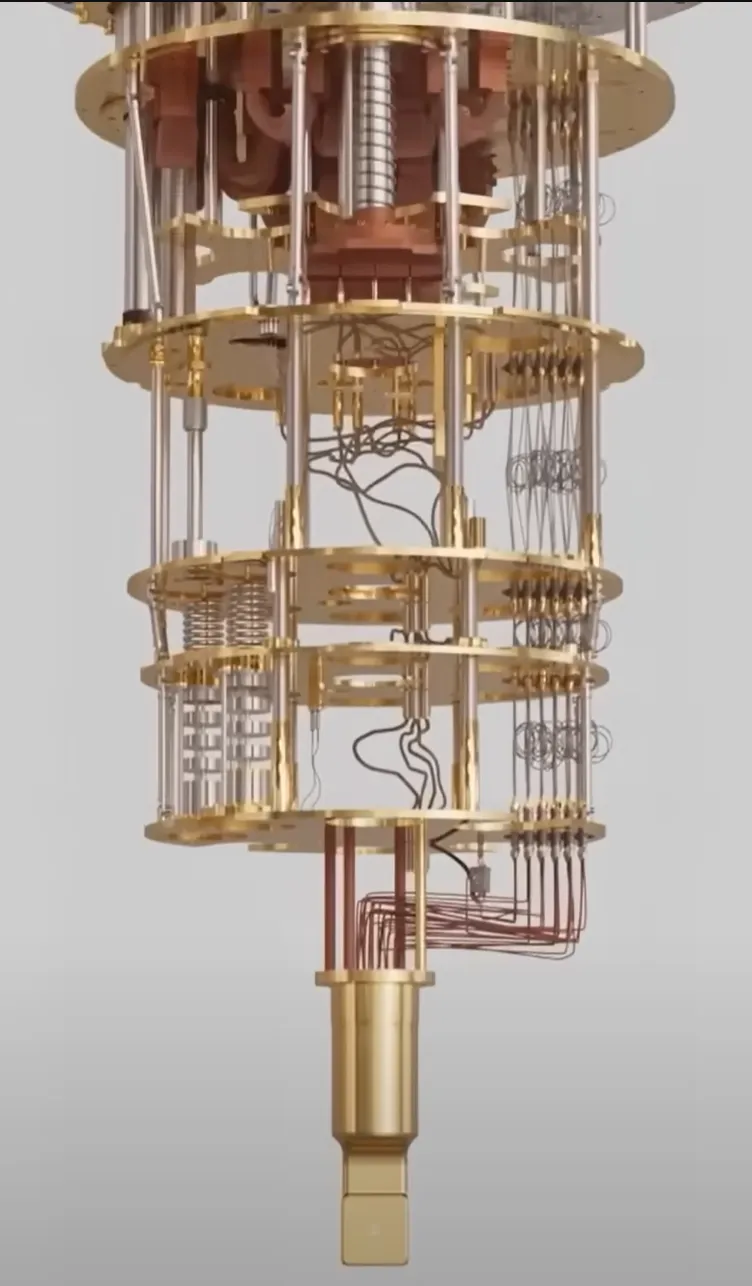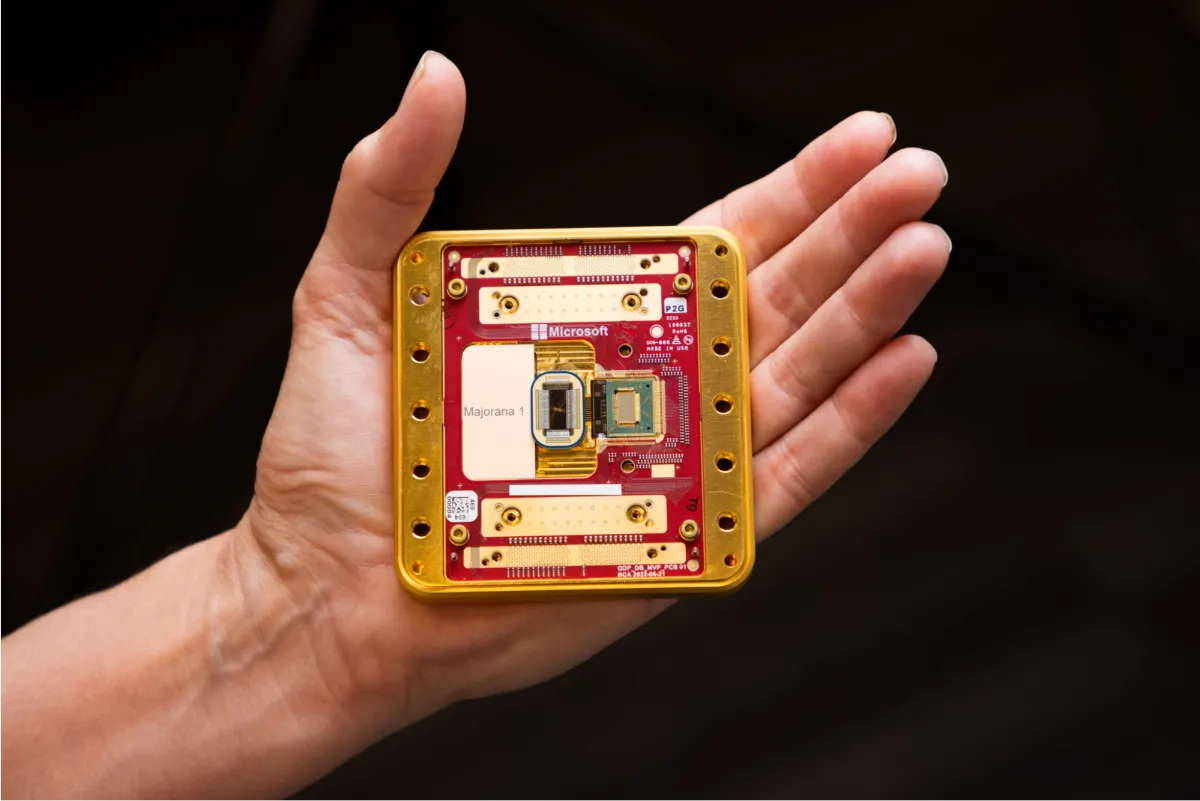Majorana 1: A new state of matter?
Mark Honeychurch - 3 March 2025
Microsoft released a video last week claiming they have created a new state of matter, a base building block for their efforts to make a new type of quantum computer using “topological superconductors”:
The video is typical marketing fluff, saying little enough of substance that one could be forgiven for thinking that we’ll all be running quantum computing at home in the next couple of years, rather than the reality that scientists aren’t even sure Microsoft’s new architecture even works as a quantum computer. And, of course, like any quantum computer, this chip at the centre of it is just a small part of the hardware required to both talk to the qubits and keep the chip at a temperature of near absolute zero. The image below, a frame taken from the very end of the video, shows just some of the hardware used to keep the chip cool (the chip is the small gold square at the very bottom), and doesn’t include any of the technology used to interface with the chip - some of which can be seen elsewhere in the video.

The promotional video dumbs down the science a lot, talking about how we all know about the three states of matter - solid, liquid and gas - but that Microsoft’s qubits are a new state of matter to these three. From the video:
We see the states of matter every day. Solids keep their shape, liquids vary but keep their volume, gases expand to fill the space they’re in. All defined ultimately by how their atoms behave. But what if there were more? What if under the right conditions, you could engineer more? States that have only ever been theorised, that would change how subatomic particles actually behave?
It seems that they’re just pretending that plasmas and bose-einstein condensates don’t exist - and those are just two states of matter that I can remember. A quick google search also reveals the existence of the neutron-degenerate matter, fermionic condensate and quark–gluon plasma - as well as other, contested states of matter, and several more theorised states (for the record, I have no idea if this “new” state of matter is actually a form of fermionic condensate).

Microsoft’s chip is named after Ettore Majorana, an Italian theoretical physicist who theorised a fermion that is its own antiparticle. The Majorana 1 quantum chip reportedly uses these particles in a state called a Majorana zero mode, which allows them to be used for quantum calculations. Of course, there’s a complexity to quantum computing, and just describing these basics has taken me to a point where I’m pretty much talking about something I don’t understand well at all - so if you want more details, you’ll need to look elsewhere!
Of interest to skeptics, Microsoft has previously claimed success of a Majorana fermion quantum computer in a paper published in Nature in 2018, but this paper was eventually retracted in 2021 when it was shown that their results were also consistent with “Andreev modes” as well as “Majorana zero modes”, so the paper didn’t actually prove that they’d managed to use Majorana zero modes after all.
This time round, scientists are already primed to be skeptical about Microsoft’s claims, including the Editors of the journal (Nature) these new results were published in:
The editorial team wishes to point out that the results in this manuscript do not represent evidence for the presence of Majorana zero modes in the reported devices. The work is published for introducing a device architecture that might enable fusion experiments using future Majorana zero modes.
Also, even if this is true, what Microsoft claims to have achieved so far is a long way from the cutting edge of quantum computing. Although the video mentions scaling to a million qubits, only six qubits are present on their current chip. As noted Computer Scientist Scott Aaronson said on his blog recently:
If Microsoft’s claim stands, then topological qubits have finally reached some sort of parity with where more traditional qubits were 20-30 years ago.
If this does turn out to be a valid way of building a quantum chip, and if Microsoft’s promise of being able to rapidly scale up to a million qubits in the next few years eventuates, this may be a part of the future of quantum computing. But that’s a lot of ifs, and I’m not going to hold my breath. So far what we’re seeing from Microsoft is a lot of slick marketing to help bolster some pretty strong claims - only time will tell if they’re on to something.